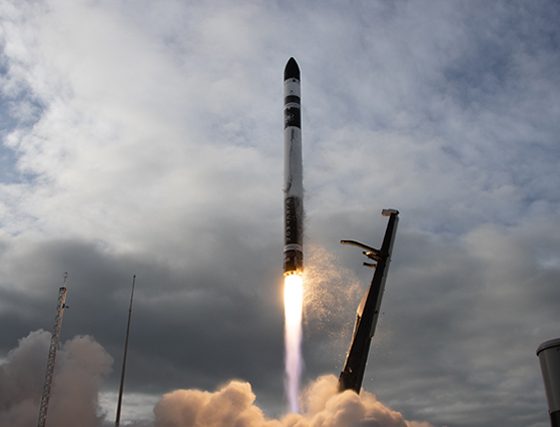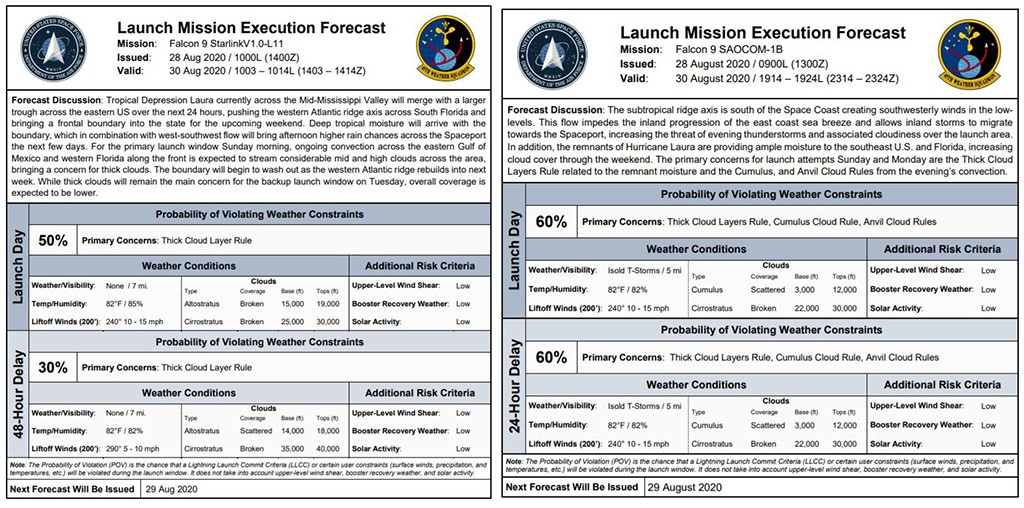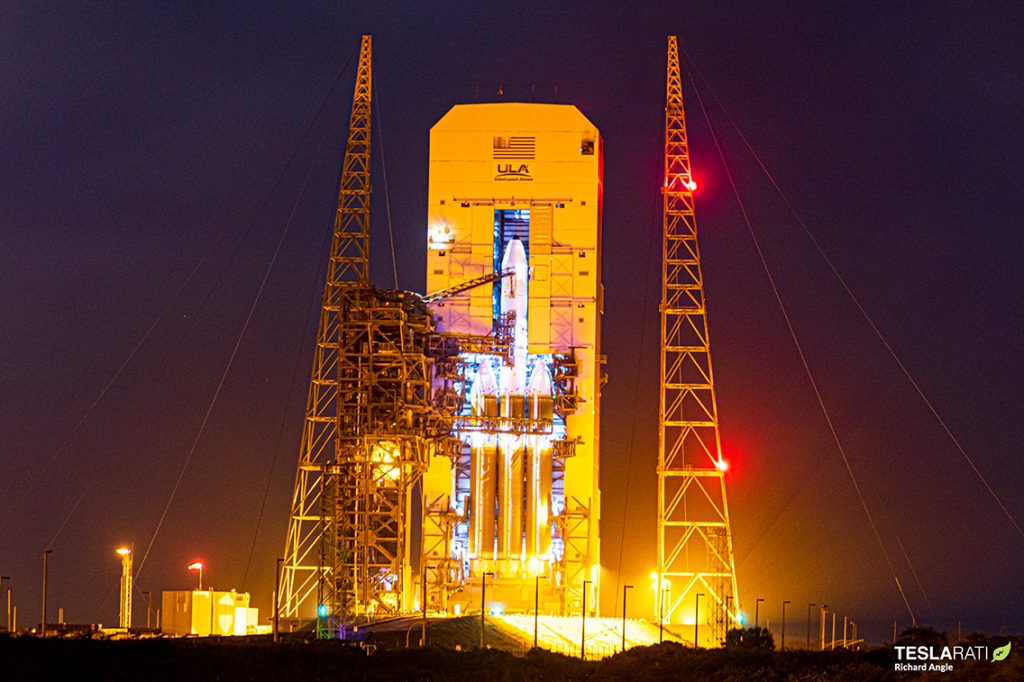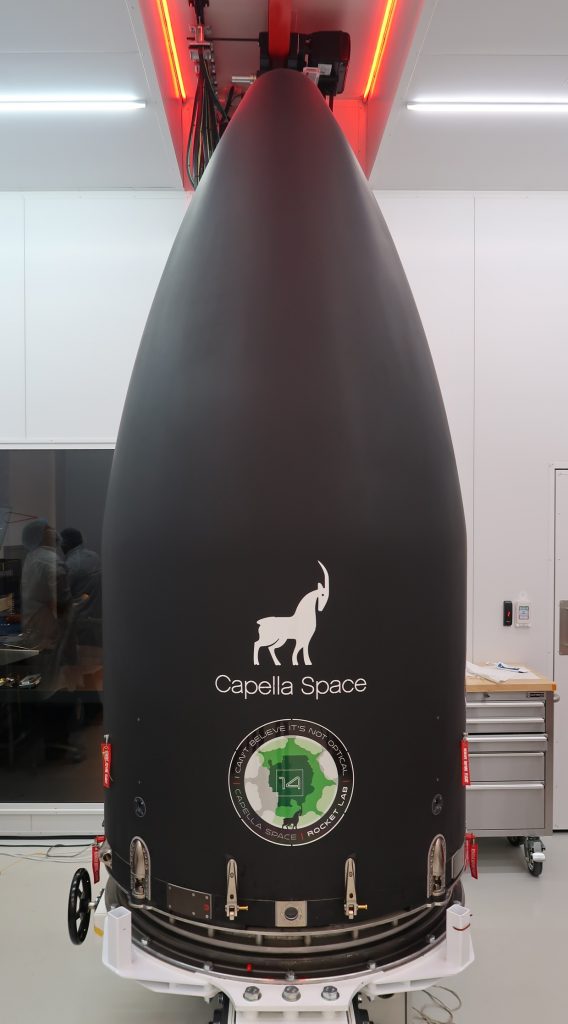

News
SpaceX, Rocket Lab, ULA all have rocket launches planned this weekend
The final weekend of August 2020 is shaping up to be an exciting one in the world of rocket launching. United Launch Alliance (ULA) looks to kick off weekend activities early on Saturday morning with the launch of its Delta IV Heavy rocket carrying a classified satellite payload for the National Reconnaissance Office at 2:04 am EDT (0604 UTC) from Cape Canaveral Air Force Station’s Space Launch Complex 37. Following a successful ULA launch, the weekend’s activity will kick into high gear. Even SpaceX founder and CEO, Elon Musk, agrees that this weekend could be “intense” as stated in a post to his Twitter account Friday, August 28.
Good chance something will slip, but, yeah, Sunday is intense— Elon Musk (@elonmusk) August 28, 2020
According to weather Launch Mission Execution Forecasts provided by the 45th Weather Squadron and confirmed via the company’s Twitter account, SpaceX aims to get two Falcon 9’s launched from the Florida coast just nine hours apart. The company also has a possible flight test of its Starship prototype vehicle on the books from Boca Chica, Texas this weekend. Rocket Lab looks to join in the launching activity with the return to flight mission of its Electron rocket following the wrap-up of its recent in-flight anomaly investigation.
Pending Range availability, targeting back-to-back Falcon 9 launches from Florida on Sunday, August 30—another flight of Starlink from LC-39A at 10:12 a.m. EDT followed by the SAOCOM 1B mission from SLC-40 at 7:18 p.m. EDT pic.twitter.com/uV9MN2Nq2X— SpaceX (@SpaceX) August 28, 2020

SpaceX can only launch this weekend if ULA does too
As SpaceX and ULA both launch from what is referred to as the eastern range – the location of all launches originating from Cape Canaveral Air Force Station or Kennedy Space Center – only one launch provider can be supported at a time by the 45th Space Wing and 45th Weather Squadron which oversee eastern range operations.
As a part of the reservation process ahead of securing a launch date with the eastern range, each launch provider chooses a targeted launch date and secures a number of back-up launch opportunities should a delay occur.
In the case of ULA’s NROL-44 mission, a primary launch opportunity and two back-up opportunities – 24 hours and 48 hours after the initial launch attempt – have been identified. This means that should the Delta IV Heavy suffer another critical issue resulting in a delay during its Saturday, August 29 primary launch attempt, both of SpaceX’s Falcon 9 launch opportunities will be delayed as well.

ULA’s NROL-44 Delta IV Heavy carries a classified satellite payload for the National Reconnaissance Office, a national security division of the United States government. As such, the NROL-44 mission is a matter of national security and takes precedence over both SpaceX’s internal Starlink mission and SAOCOM-1B payload for customer Comisión Nacional de Actividades Espaciales, Argentina’s national space agency.
If the ULA NROL-44 mission is delayed through both back-up launch opportunities SpaceX, presumably, would have to wait until no earlier than Tuesday, September 1 to launch a Falcon 9.
Rocket Lab “I Can’t Believe It’s Not Optical”
While SpaceX will have to wait for ULA’s Delta IV Heavy to clear its pad before attempting either of the planned Falcon 9 launches, Rocket Lab will attempt the return to flight mission of its Electron rocket – the fourteenth flight overall – regardless (weather permitting).
The launch attempt initially scheduled for 11:04pm ET (0304 UTC) Friday, August 28 was rescheduled due to high winds and heavy cloud cover over Launch Complex-1A in Mahia, New Zealand. The next available launch attempt at 11:05 pm ET Sunday, August 30 (0305 UTC Monday, August 31) lines up for Electron to take off just four hours after SpaceX’s SAOCOM-1B mission.
Launch Update: Ground winds remain high at LC-1 tomorrow, so we're now targeting no earlier than Aug 31 UTC for the #ICantBelieveItsNotOptical mission. 🚀🛰️
Mission info https://t.co/zI36drt64x
Launch timing:
ET: 23:05, Aug 30
PT: 20:05, Aug 30
NZT: 15:05, Aug 31 pic.twitter.com/2RRwpxhDSl— Rocket Lab (@RocketLab) August 28, 2020
Following an in-flight anomaly during Electron’s thirteenth mission in July, Rocket Lab was forced to stand down from active launching status to complete a full investigation into the incident. In about a month’s time, Rocket Lab was able to track down and remedy an overheating issue with a single electrical connection on Electron’s second stage.
After receiving clearance from the Federal Aviation Administration to resume operational launches, Rocket Lab has announced that Electron’s fourteenth flight -nicknamed “I Can’t Believe It’s Not Optical” – will be a dedicated mission for Capella Space, a California-based company that utilizes Earth observation data to provide information services.
According to a statement provided by Rocket Lab, the satellite payload called “Sequoia” is “a single 100 kg class microsatellite which will be the first publicly available satellite in the company’s commercial Synthetic Aperture Radar (SAR) constellation.”

A big goal of Rocket Lab’s is to join competitor SpaceX in a class of launchers that regularly recovers and reuses orbital-class boosters. Rocket Lab intends to catch an Electron first-stage booster in-flight once it has been dispensed by catching the falling booster’s parachute canopy with a grappling hook secured to a helicopter.
However, the company has stated that a full-scale demonstration of this effort is targeted for no earlier than the seventeenth mission of Electron currently slated to occur in Fall 2020.
If all proceeds as planned, this weekend could end up as a launchfest of rockets and spaceship prototypes. At the time of publishing, all is proceeding as expected for ULA’s Delta IV Heavy launch attempt and the weather looks good on Saturday, August 29.
ULA has confirmed that the previous issues that caused a launch attempt delay have all been cleared and weather outlook remains at an 80% chance of favorable launching conditions.
The launch attempt will be streamed live and is expected to begin at 1:43 am EDT (0543 UTC) on the company’s website or viewed below.
https://www.youtube.com/watch?v=Fx5GjjCtcgo&feature=youtu.be

News
Tesla FSD fleet is nearing 7 billion total miles, including 2.5 billion city miles
As can be seen on Tesla’s official FSD webpage, vehicles equipped with the system have now navigated over 6.99 billion miles.

Tesla’s Full Self-Driving (Supervised) fleet is closing in on almost 7 billion total miles driven, as per data posted by the company on its official FSD webpage.
These figures hint at the massive scale of data fueling Tesla’s rapid FSD improvements, which have been quite notable as of late.
FSD mileage milestones
As can be seen on Tesla’s official FSD webpage, vehicles equipped with the system have now navigated over 6.99 billion miles. Tesla owner and avid FSD tester Whole Mars Catalog also shared a screenshot indicating that from the nearly 7 billion miles traveled by the FSD fleet, more than 2.5 billion miles were driven inside cities.
City miles are particularly valuable for complex urban scenarios like unprotected turns, pedestrian interactions, and traffic lights. This is also the difference-maker for FSD, as only complex solutions, such as Waymo’s self-driving taxis, operate similarly on inner-city streets. And even then, incidents such as the San Francisco blackouts have proven challenging for sensor-rich vehicles like Waymos.
Tesla’s data edge
Tesla has a number of advantages in the autonomous vehicle sector, one of which is the size of its fleet and the number of vehicles training FSD on real-world roads. Tesla’s nearly 7 billion FSD miles then allow the company to roll out updates that make its vehicles behave like they are being driven by experienced drivers, even if they are operating on their own.
So notable are Tesla’s improvements to FSD that NVIDIA Director of Robotics Jim Fan, after experiencing FSD v14, noted that the system is the first AI that passes what he described as a “Physical Turing Test.”
“Despite knowing exactly how robot learning works, I still find it magical watching the steering wheel turn by itself. First it feels surreal, next it becomes routine. Then, like the smartphone, taking it away actively hurts. This is how humanity gets rewired and glued to god-like technologies,” Fan wrote in a post on X.
News
Tesla starts showing how FSD will change lives in Europe
Local officials tested the system on narrow country roads and were impressed by FSD’s smooth, human-like driving, with some calling the service a game-changer for everyday life in areas that are far from urban centers.

Tesla has launched Europe’s first public shuttle service using Full Self-Driving (Supervised) in the rural Eifelkreis Bitburg-Prüm region of Germany, demonstrating how the technology can restore independence and mobility for people who struggle with limited transport options.
Local officials tested the system on narrow country roads and were impressed by FSD’s smooth, human-like driving, with some calling the service a game-changer for everyday life in areas that are far from urban centers.
Officials see real impact on rural residents
Arzfeld Mayor Johannes Kuhl and District Administrator Andreas Kruppert personally tested the Tesla shuttle service. This allowed them to see just how well FSD navigated winding lanes and rural roads confidently. Kruppert said, “Autonomous driving sounds like science fiction to many, but we simply see here that it works totally well in rural regions too.” Kuhl, for his part, also noted that FSD “feels like a very experienced driver.”
The pilot complements the area’s “Citizen Bus” program, which provides on-demand rides for elderly residents who can no longer drive themselves. Tesla Europe shared a video of a demonstration of the service, highlighting how FSD gives people their freedom back, even in places where public transport is not as prevalent.
What the Ministry for Economic Affairs and Transport says
Rhineland-Palatinate’s Minister Daniela Schmitt supported the project, praising the collaboration that made this “first of its kind in Europe” possible. As per the ministry, the rural rollout for the service shows FSD’s potential beyond major cities, and it delivers tangible benefits like grocery runs, doctor visits, and social connections for isolated residents.
“Reliable and flexible mobility is especially vital in rural areas. With the launch of a shuttle service using self-driving vehicles (FSD supervised) by Tesla in the Eifelkreis Bitburg-Prüm, an innovative pilot project is now getting underway that complements local community bus services. It is the first project of its kind in Europe.
“The result is a real gain for rural mobility: greater accessibility, more flexibility and tangible benefits for everyday life. A strong signal for innovation, cooperation and future-oriented mobility beyond urban centers,” the ministry wrote in a LinkedIn post.
News
Tesla China quietly posts Robotaxi-related job listing
Tesla China is currently seeking a Low Voltage Electrical Engineer to work on circuit board design for the company’s autonomous vehicles.

Tesla has posted a new job listing in Shanghai explicitly tied to its Robotaxi program, fueling speculation that the company is preparing to launch its dedicated autonomous ride-hailing service in China.
As noted in the listing, Tesla China is currently seeking a Low Voltage Electrical Engineer to work on circuit board design for the company’s autonomous vehicles.
Robotaxi-specific role
The listing, which was shared on social media platform X by industry watcher @tslaming, suggested that Tesla China is looking to fill the role urgently. The job listing itself specifically mentions that the person hired for the role will be working on the Low Voltage Hardware team, which would design the circuit boards that would serve as the nervous system of the Robotaxi.
Key tasks for the role, as indicated in the job listing, include collaboration with PCB layout, firmware, mechanical, program management, and validation teams, among other responsibilities. The role is based in Shanghai.
China Robotaxi launch
China represents a massive potential market for robotaxis, with its dense urban centers and supportive policies in select cities. Tesla has limited permission to roll out FSD in the country, though despite this, its vehicles have been hailed as among the best in the market when it comes to autonomous features. So far, at least, it appears that China supports Tesla’s FSD and Robotaxi rollout.
This was hinted at in November, when Tesla brought the Cybercab to the 8th China International Import Expo (CIIE) in Shanghai, marking the first time that the autonomous two-seater was brought to the Asia-Pacific region. The vehicle, despite not having a release date in China, received a significant amount of interest among the event’s attendees.








